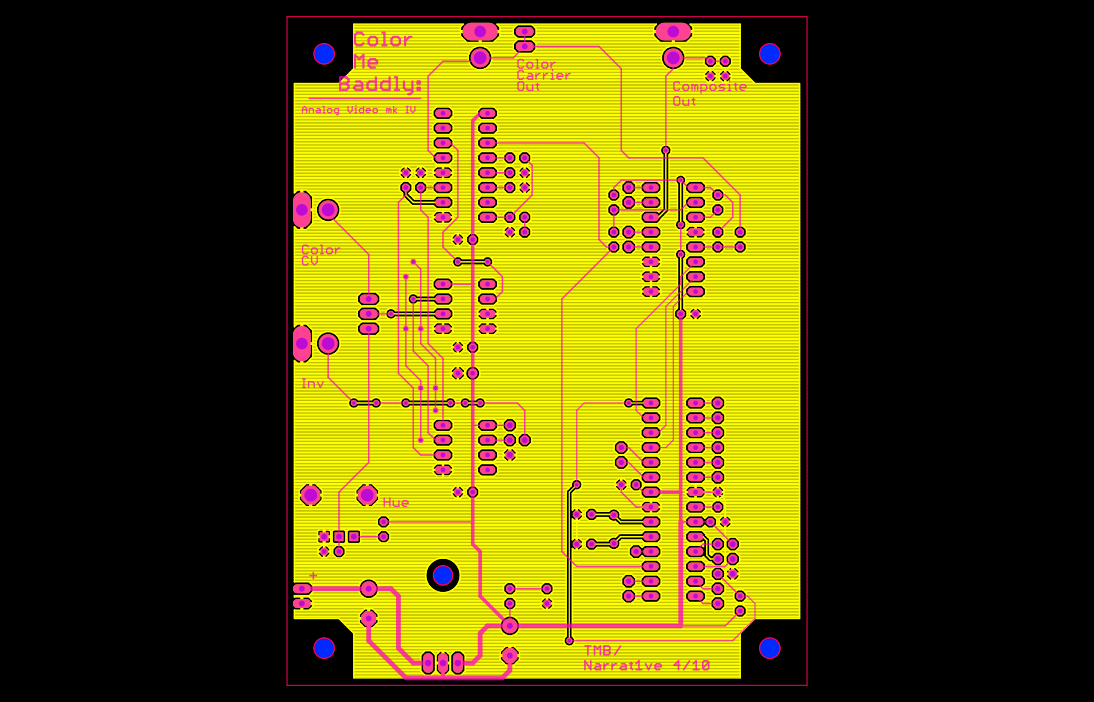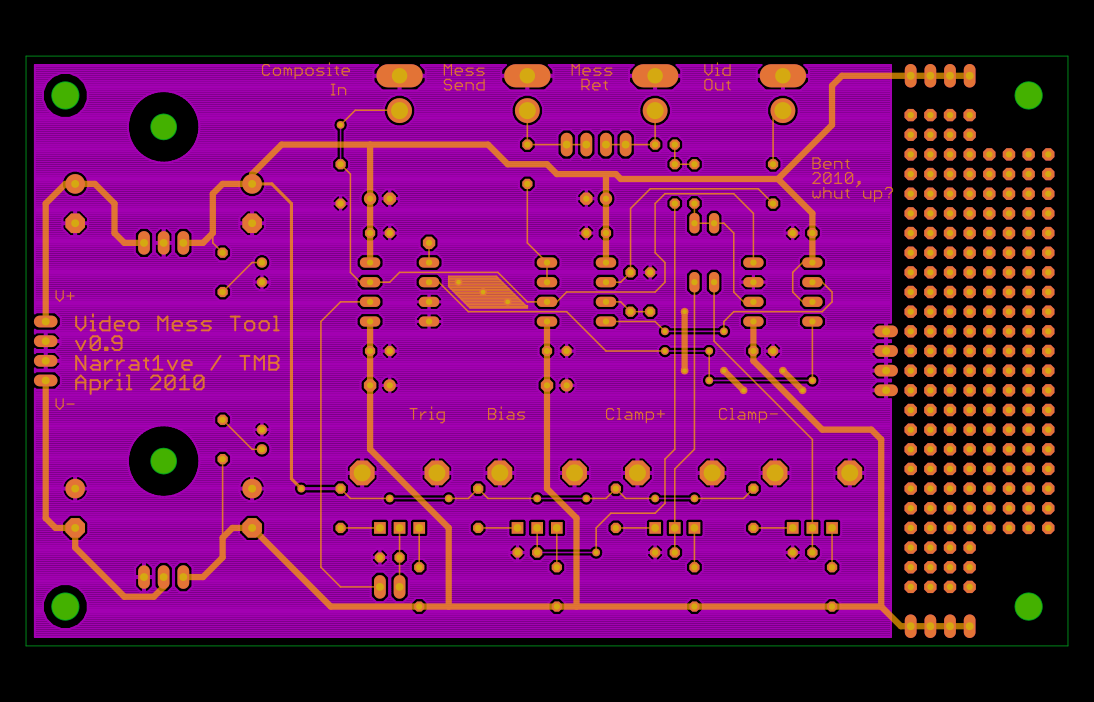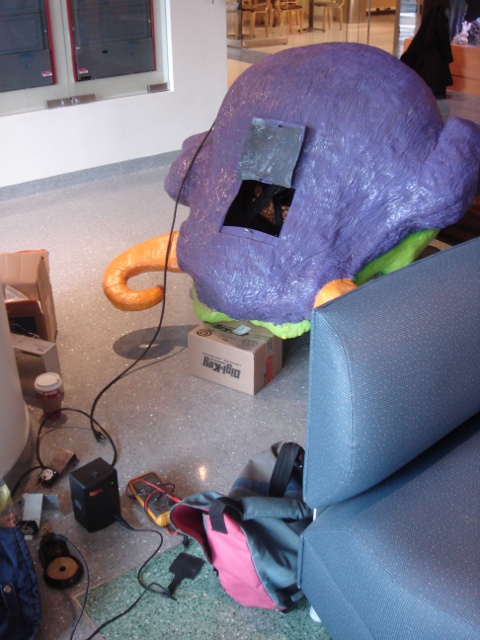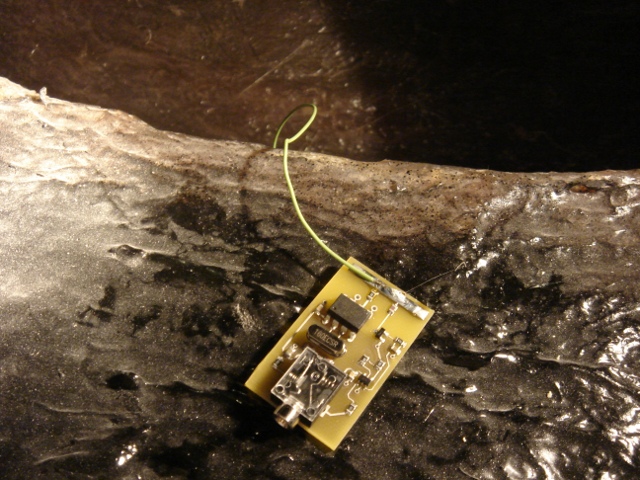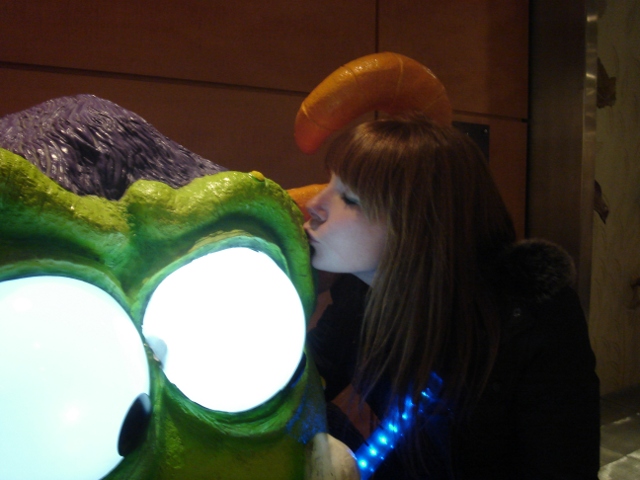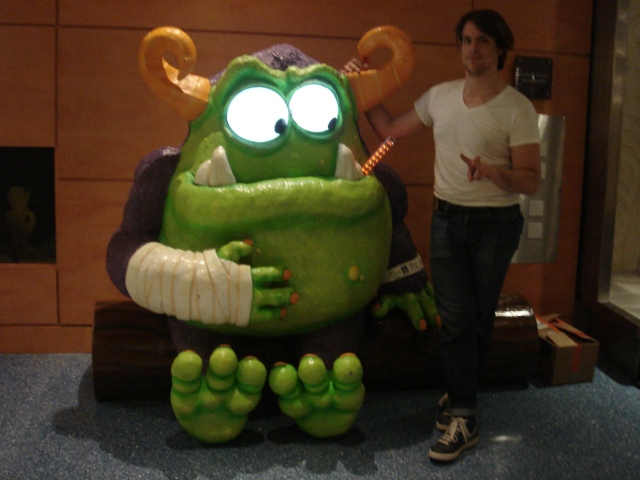Video Mess Tool Assembly
Wednesday, April 21st, 2010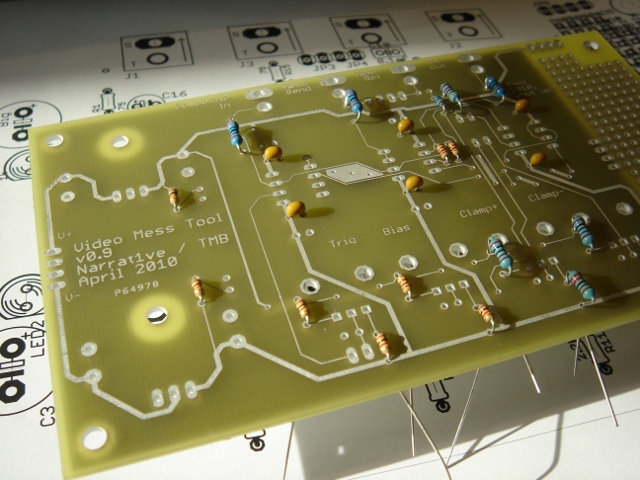
Yesterday the PCBs for the Mess Tool came in and I populated them. Like a big dummy I forgot to order the LT1203, so testing was relegated to the bench until today. This turned out to be a good thing, since of course there were legit problems which needed attention.
You can see from the pics that there’s a proto area in the mess tool. That ended up being a good thing. Part of the circuit is a set of clamps which let you keep whatever gnarly signal you’re injecting into the poor unsuspecting TV from spilling over into the sync region.
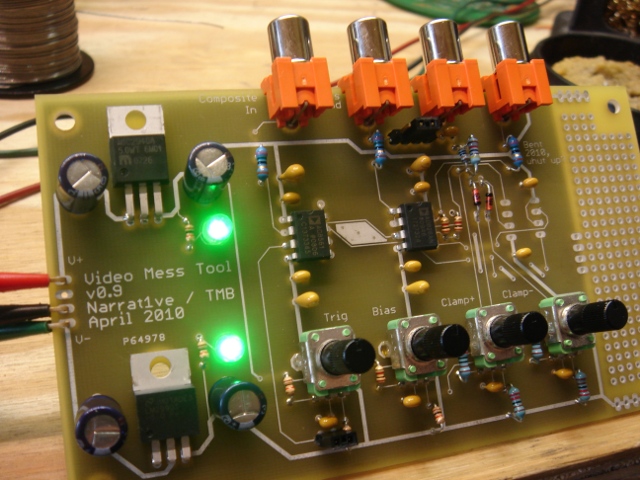
These clamps ended up being the source of some trouble — they were mushy passive clamps which put a 47k in series with a video signal, which it turns out is TOO MUCH, since all that pretty ground plane (and the IC inputs, and whatever other parasitic stuff is going on) contributes significant capacitance at color frequencies. The diodes I was using to clamp to a reference (SD103s) turn out to also have a 50pF capacitance or so at 1MHz, which again, counts for a lot.
This means that the video through the “snarled up” section tended to just get filtered away to nothing. The solution was (well, will be, I’m still building it) an active clamp which lowers all the circuit impedances and generally burns up more current.
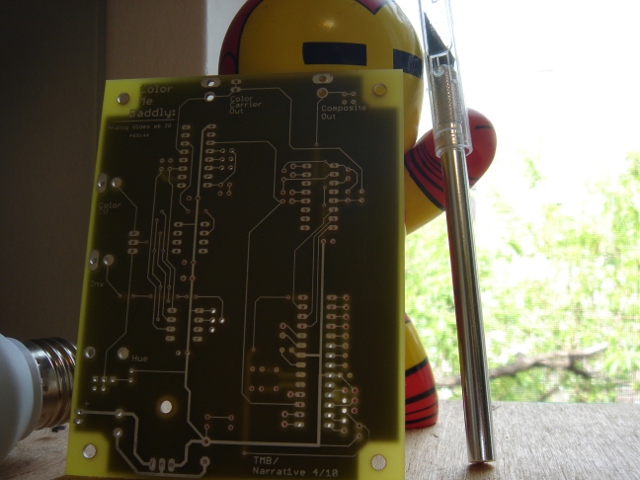
The mux came in this morning (and Digikey was out of parts in the correct footprint, grumble) as did the boards for the synth and some low-capacitance diodes. So today will be busy. More soon.
Also. Not to get gooey, but man do I love hardware. Really. I forget that in the good old days it was me and a scope and I never ever wanted to learn to program. You know, when men were men and all that.
Xoxo, TB
